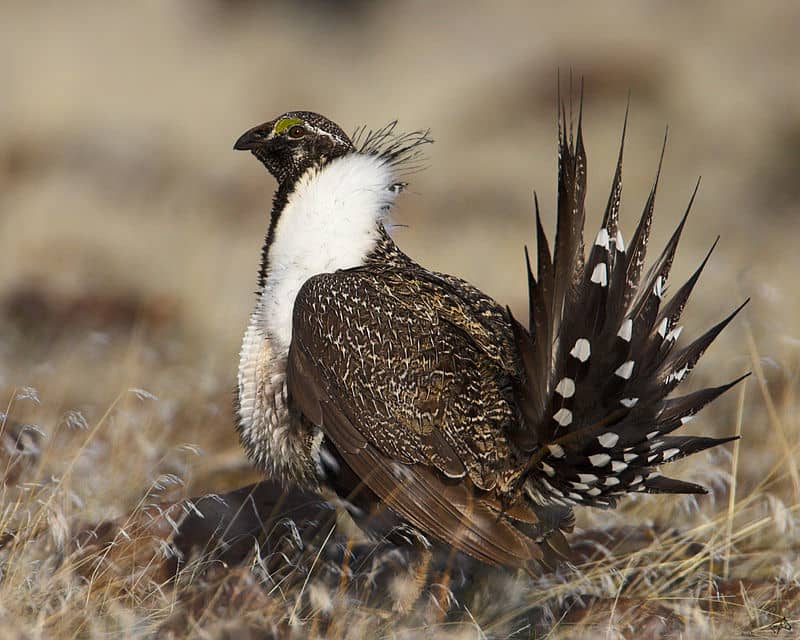Montana Closes Sage Grouse Hunting in Most Areas
OutdoorHub Reporters 07.14.14

The Montana Fish and Wildlife Commission (FWP) announced on Thursday that it will be closing sage grouse hunting in all or part of the 32 counties that currently allow it. Hunters will still be able to harvest the birds in a limited capacity in 20 counties, but officials have also shortened the two-month season to just one month. Bag limits have not been changed.
“This is somewhat of a tragic day,” FWP Commissioner Matthew Tourtlotte told The Missoulian. “We’re going to close a significant portion of the state to sage grouse hunting. Those areas aren’t likely to have sage grouse hunting ever again.”
Montana has the second largest population of sage grouse in the United States and the second largest acreage of grouse habitat as well. That habitat—just like in the 10 other states with a sage grouse population—is dwindling, and many worry that the sage grouse may soon be listed as an endangered species by the federal government. Once considered the leading game bird of the West, Montana hunters have harvested considerably less birds in recent years when compared to three decades ago. According to the Associated Press, only 2,800 sage grouse were taken in 2012. Hunters in 1983 bagged more than 45,000.
“Hunting isn’t the reason sage grouse is in decline in Montana or the rest of the West. It’s habitat loss,” said Ben Deeble of the Big Sky Upland Game Bird Association.
Officials agree that hunting is only a slight factor in the decline of the sage grouse in the Montana, yet with sage grouse numbers dropping below 45 percent of long-term average for the past three years, officials are scrambling to preserve the species by any means possible. The largest problem facing the bird remains the loss of sagegrass and steppe grasslands.
Montana’s sage grouse population has fared better than some other states’ due to Montana’s comparatively large acreage of available habitat, yet more and more land is being converted to cropland or taken over by nonnative grasses and weeds. Experts hope that a limited hunting season will help give the sage grouse a chance to recover. After all, the species did rebound in the 1990s with male grouse counts reaching all-time highs in some areas.
“We wouldn’t expect something above the long-term average to happen in one year,” FWP wildlife management section chief Quentin Kujula said. “But if things are working for them; if it’s not too wet and they have good cover, they can turn around.”
Counties that will still be open to grouse hunters include Teton, Cascade, Judith Basin, Pondera, Fergus, Petroleum, Chouteau, Toole, Liberty, Hill, Blaine, Phillips, Valley, Roosevelt, Beaverhead, Silver Bow, Deer Ledge, Broadwater, and Jefferson.

